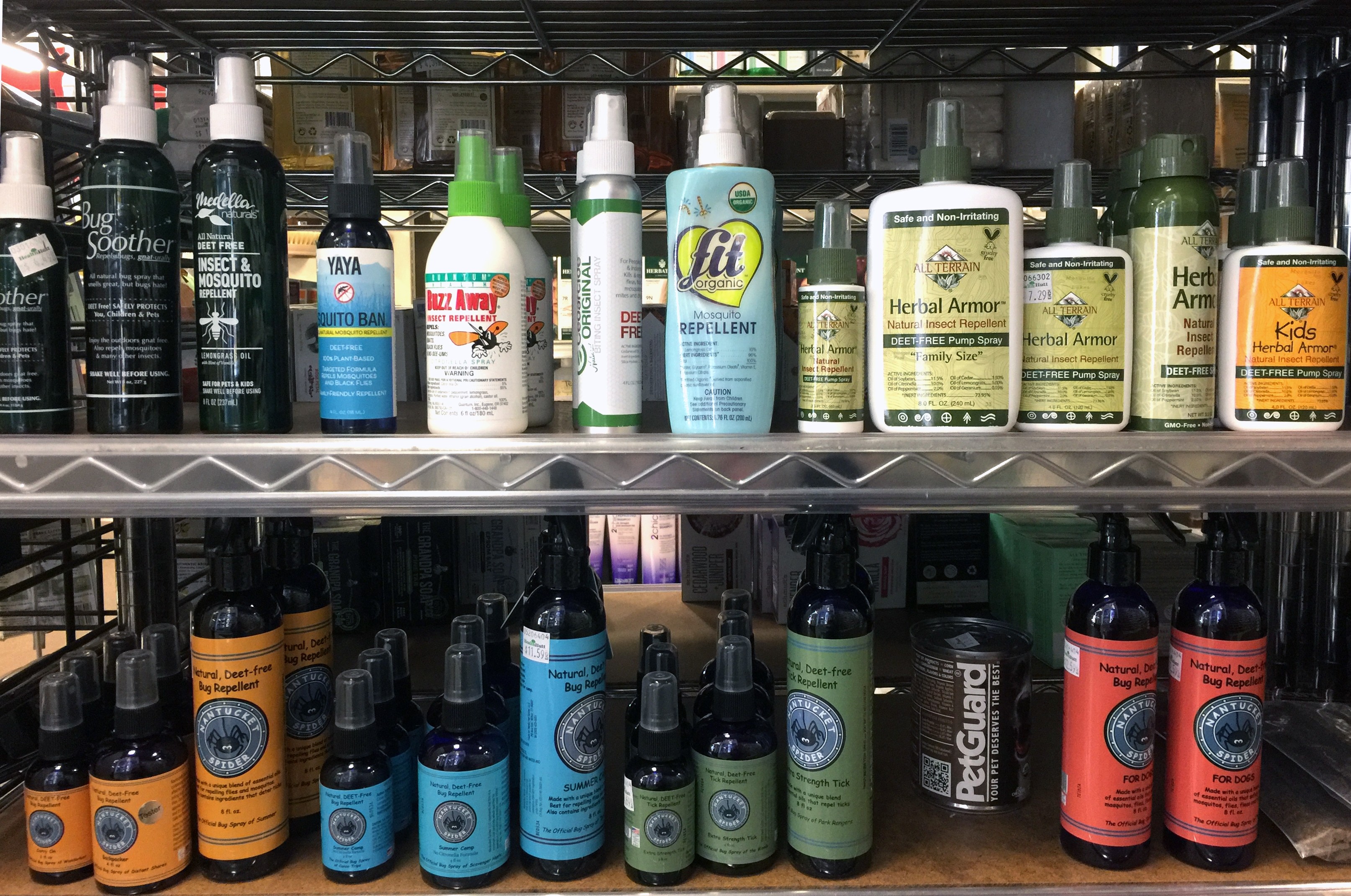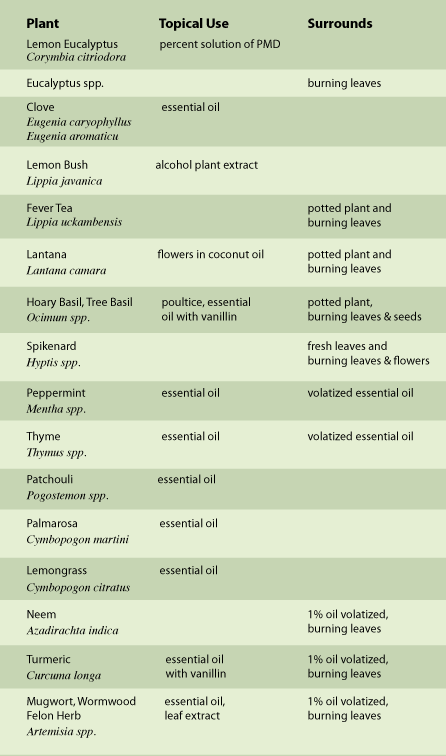Though we can walk into a store and purchase spray on bug repellent, traditional ways to keep bugs away included certain plantings, hanging plants in the home, burning plants as fumigants and making infused oils to apply to skin or clothing. Plants traditionally used to repel bugs have been proven to be quite effective.
Many people choose DEET-free repellents for health concerns. Even though essential oils are plant derived, they are highly concentrated. We should keep in mind that plants used to deter or repel insects contain components that could be toxic for people too and should be used with care. Essential oils are intended to be diluted and many of them have been proven safe in small concentrations. Some plants are found to be carcinogens, including anise, basil and rosemary – which are also used as cooking spices.
The most common hazards of insect repelling plants are sensitization, phototoxicity and/or skin irritation. Sensitization is a slower immune response than an immediate allergic reaction that takes 12 to 21 days of repeated exposures. Phototoxic means it can cause one to be more sensitive to the sun or light and basically makes it easier to become sunburned. Irritation is a surface reaction on the skin.
These hazards seem small in contrast to the warnings on DEET, but we should be aware that mores research on plants could be needed. In a study authored by Sinha et al, essential oils of palmarosa, citronella, lemongrass, and vetiver were concluded to be safe for human consumption at low concentrations. In contrast, we are warned to contact poison control upon any consumption of DEET.
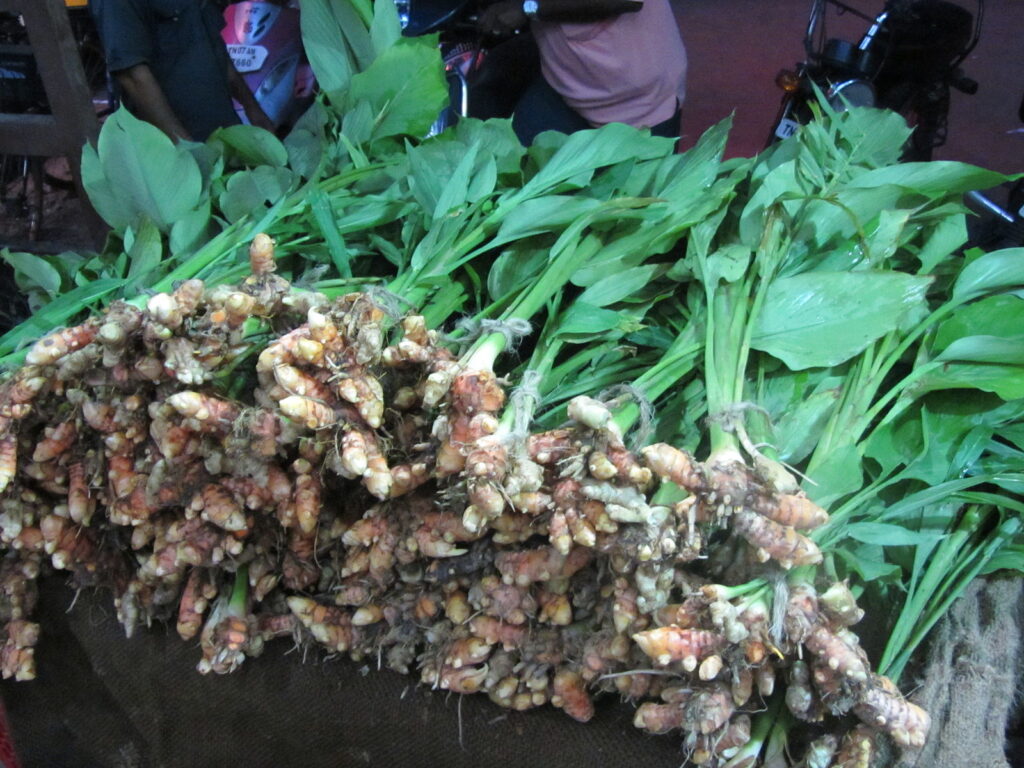
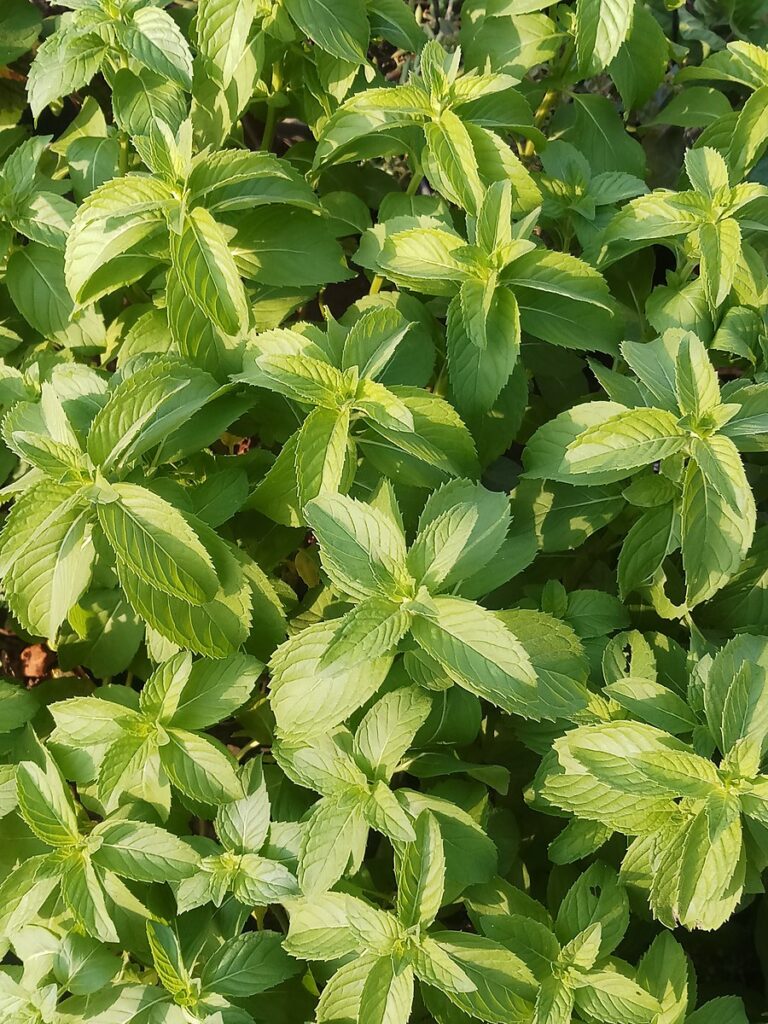
A few plants that have been proven effective and their tested uses are listed in the table below. A more detailed version of this chart can be found in this very educational and interesting article by Maia and Moore including rates of repellency protection. They also include a chart of safe concentrations possible hazardous natural repellents.
As an example of their efficacy, a mix of 100% turmeric essential and 5% vanillin applied topically provided 100% protection against Ae. aegyptifor 4.5 hours, 100% protection against C. quinquefasciatus for 8 hours and 100% protection against An. dirusfor 8 hours.
Palmarosa essential oil applied topically provided 100% protection against An. culicifacies for 12 hours and 96.3% protection against C. quinquefasciatus for 12 hours.
Katie Wells wrote a fabulous blog post ‘All-Natural Homemade Bug Spray Recipes That Work!’ See her blog for more information.
Her recipes utilize essential oils, witch hazel, vegetable glycerin, and loose bulk herbs – all of which we carry in our stores.
Dried herbs can be found in our bulk section. You can get whatever amount using our plastic baggies, scoops and scale. You can also bring your own containers and if you need, we can help you tare the container, so you don’t pay for extra weight.
Listed below are some insect repellent products we carry with links to their descriptions and ingredient lists. If you are interested in a specific brand, you can call us before you come in to make sure it is at the location you would like to visit. We can even look into special ordering a brand we don't currently have!
Fit Organic Mosquito Repellent
Cedarcide Original Biting Insect Spray
Made from natural cedarwood oil.
YAYA Squito Ban and YAYA Tick Ban
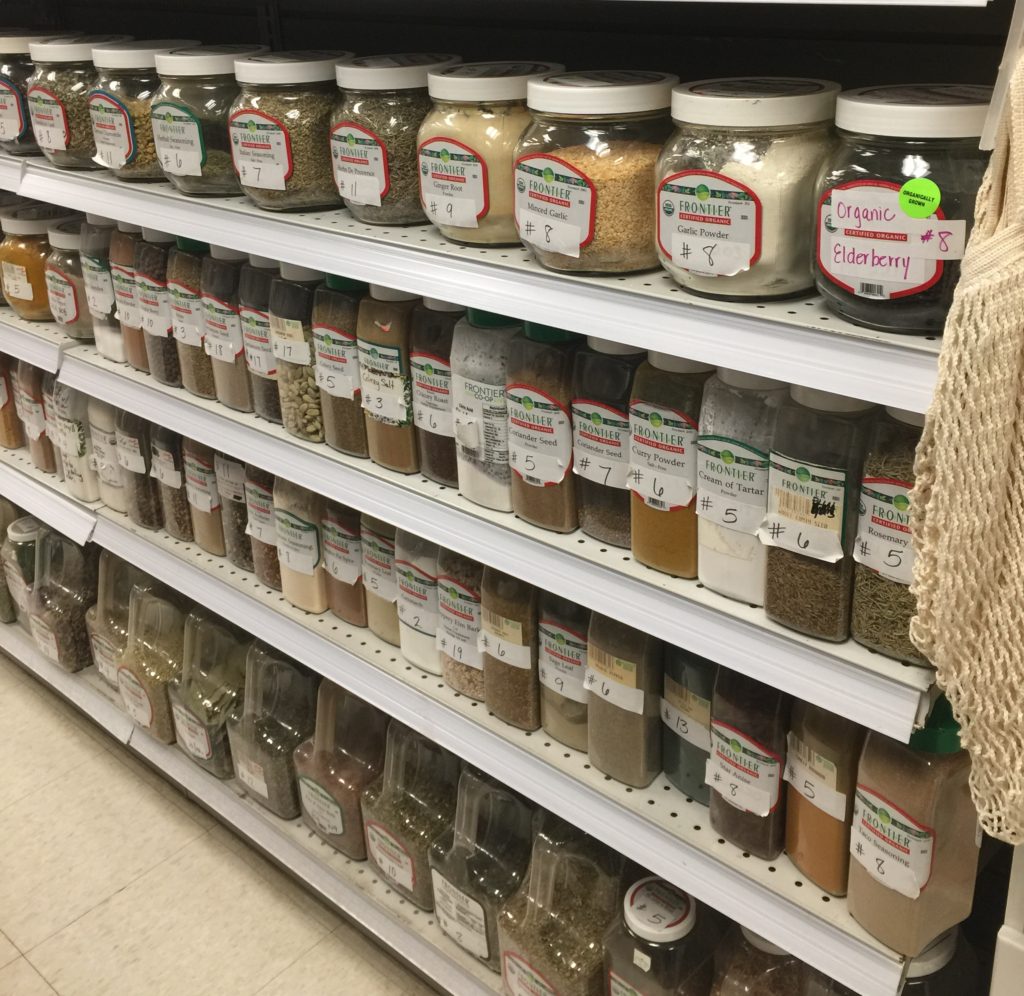
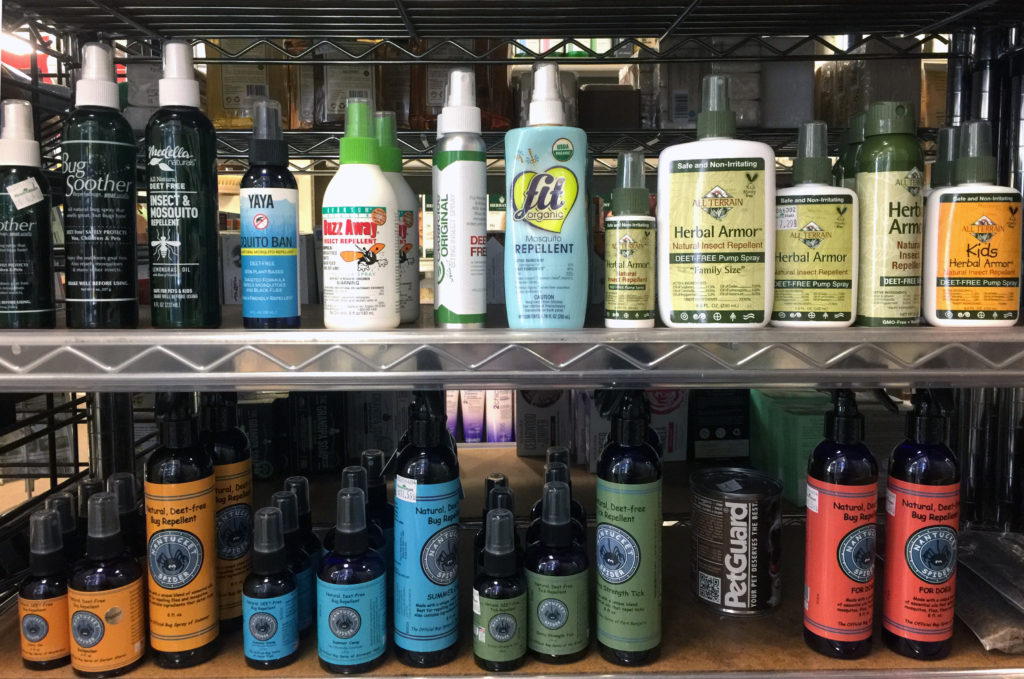
Sources
Maia, Marta Ferreira, and Sarah J Moore. “Plant-Based Insect Repellents: a Review of Their Efficacy, Development and Testing.” Malaria Journal, vol. 10, no. S1, 2011, doi:10.1186/1475-2875-10-s1-s11.
Sinha, Sonali, et al. “Evaluation of Toxicity of Essential Oils Palmarosa, Citronella, Lemongrass and Vetiver in Human Lymphocytes.” Food and Chemical Toxicology, vol. 68, 2014, pp. 71–77., doi:10.1016/j.fct.2014.02.036.
The information provided on this site is intended for your general knowledge only and is not a substitute for professional medical advice or treatment for specific medical conditions. You should not use this information to diagnose or treat a health problem or disease without consulting with a qualified healthcare provider. Please consult your healthcare provider with any questions or concerns you may have regarding your condition.
